by Deep Green Resistance News Service | Mar 30, 2017 | Colonialism & Conquest
Featured image: Dozens of people have been shot on sight by park guards in Kaziranga, including severely disabled tribal man Gaonbura Killing. © BBC
by Survival International
Survival International has called on the UN expert on extrajudicial executions to condemn shoot on sight conservation policies.
In a letter to the Special Rapporteur charged with the issue, Survival stated that “shoot on sight policies directly affect tribal people who live in or adjacent to ‘protected areas’… particularly when park guards so often fail to distinguish subsistence hunters from commercial poachers.”
The letter adds that “nobody knows when wildlife officers are permitted to use lethal force against [suspected poachers], and it is impossible for dependents to hold to account officers whom they believe to have killed without good reason. Many countries have gone further, and granted wildlife officers immunity from prosecution.”
The letter cites Kaziranga National Park in India as an especially striking example of the tactic. According to a recent BBC report, an estimated 106 people have been extrajudicially executed there in the last 20 years, including one disabled tribal man who had wandered over the park boundary to retrieve cattle.
Kaziranga guards have effective legal immunity from prosecution, and have admitted that they are instructed to shoot poaching suspects on sight. This has had serious consequences for tribal peoples living around the park. In June 2016, a seven-year-old tribal boy was shot and maimed for life by guards.
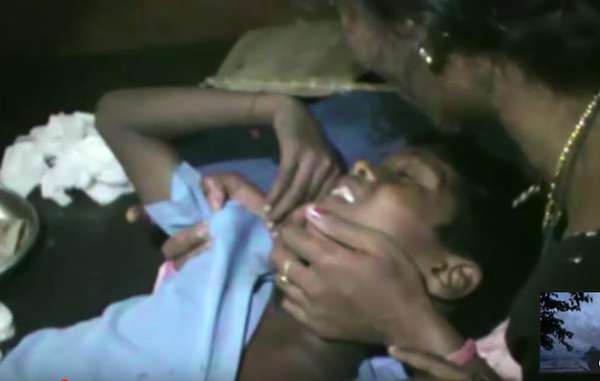
Akash Orang is comforted by his mother after being shot by a park guard. He is now severely disabled. © BBC
Similar policies are used in other parts of the world, notably Kenya, Tanzania and Botswana, among other African countries.
Speaking about his own anti-poaching work in Africa, poaching expert Rory Young from the organization Chengeta said: ”Shoot on sight is stupid. If we had been shooting on sight during this latest sting operation we would have shot a handful of poachers and that would have been the end of it. Every single poacher is an opportunity for information to get more poachers and work your way up the chain to the ringleaders.”
Survival has asked the Special Rapporteur to clarify that shoot on sight violates fundamental rights enshrined in the UN’s Civil and Political Rights Covenant and other international conventions. It also urges the UN to enquire about the policy with the Indian government, and the government of Assam state, where Kaziranga is located.
Shoot on sight is justified on the grounds that it helps to deter poachers. However, there have been several recent cases of guards and officials at Kaziranga being arrested for involvement in the illegal wildlife trade themselves.
Survival International is leading the fight against these abuses, and calling for a new conservation model that respects tribal peoples. Targeting tribal people diverts action away from tackling the true poachers – criminals conspiring with corrupt officials. Targeting tribal people harms conservation.
Survival’s Director Stephen Corry said: “If any other industry was guilty of this level of human rights abuses, there would be an international outcry. Why the silence when conservationists are involved? Torture and extrajudical killing is never justified – the law is clear on this. Some people think that the death of innocents is justified, that ‘collateral damage’ is necessary in the fight against poaching. We ask them, where is your humanity? Of course, there’s a racist element at play here: Shoot on sight policies would be unthinkable in North America or Europe.”
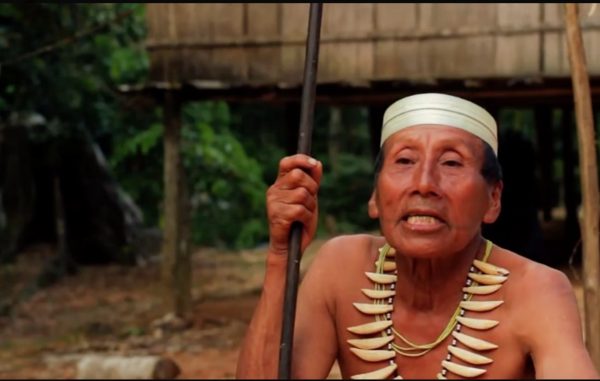
by Deep Green Resistance News Service | Mar 15, 2017 | Indigenous Autonomy, Lobbying
Featured image: Salomon Dunu, a Matsés man who survived the trauma of first contact, speaks to a Survival campaigner about the threat of oil exploration to his people. © Survival International
by Survival International
A Canadian oil company has told Survival International it will withdraw from the territory of several uncontacted tribes in the Amazon where it had been intending to explore for oil.
The company, Pacific E&P, had previously been awarded the right to explore for oil in a large area of the Amazon Uncontacted Frontier, a region of immense biodiversity which is home to more uncontacted tribes than anywhere else on Earth. It began its first phase of oil exploration in 2012.
The move follows years of campaigning by Survival International and several Peruvian indigenous organizations, including AIDESEP, ORPIO, and ORAU. ORPIO is suing the government over the threat of oil exploration.
Thousands of Survival supporters had protested by sending emails to the company’s CEO, lobbying the Peruvian government, and contacting the company through social media.
Survival also released an open letter, protesting against the threat of oil exploration, which was signed by Rainforest Foundation Norway and ORPIO. Sustained campaigning helped bring attention to the issue within Peru and around the world.
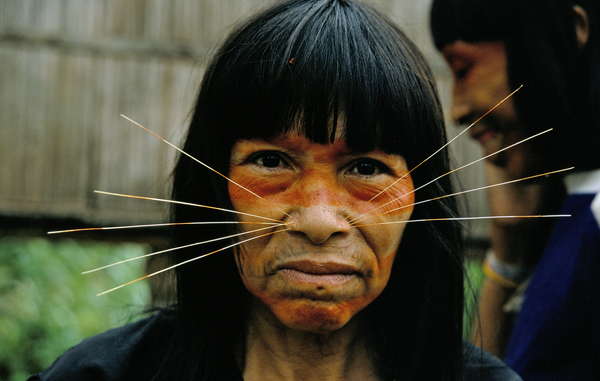
The Matsés have been dependent on and managed a large area of the Amazon Uncontacted Frontier for generations. © Christopher Pillitz
In a letter, Pacific E&P’s Institutional Relations and Sustainability Manager said that: “[The company] has made the decision to relinquish its exploration rights in Block 135… effective immediately… We wish to reiterate the company’s commitment to conduct its operations under the highest sustainability and human rights guidelines.”
At a tribal meeting in late 2016, a man from the Matsés tribe, which was forced into contact in the late 20th century, said: “I don’t want my children to be destroyed by oil and war. That’s why we’re defending ourselves… and why we Matsés have come together. The oil companies … are insulting us and we won’t stay silent as they exploit us on our homeland. If it’s necessary, we’ll die in the war against oil.”
Oil exploration involves sustained land invasion which can dramatically increase the risk of forced contact with uncontacted tribes. It leaves them vulnerable to violence from outsiders who steal their land and resources, and to diseases like flu and measles to which they have no resistance.
The announcement that it was not going ahead was welcomed by campaigners as significant in the fight to protect uncontacted peoples’ lives, lands and human rights.
Survival’s Director Stephen Corry said: “This is great news for the global campaign for uncontacted tribes and all those who wish to halt the genocide that has swept across the Americas since the arrival of Columbus. All uncontacted peoples face catastrophe unless their land is protected and we believe they are a vitally important part of humankind’s diversity and deserve their right to life to be upheld. We will continue to lead the fight to let them live.”
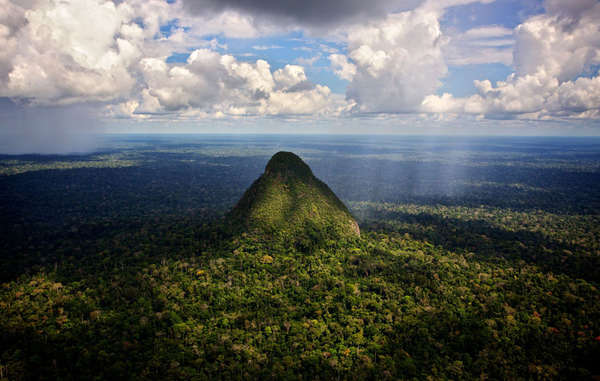
The region includes the Sierra del Divisor, or “Watershed Mountains,” a unique and highly biodiverse region known for its cone-shaped peaks. © Diego Perez
Background briefing
▪ Oil block 135 is within the proposed Yavarí Tapiche indigenous reserve. Peru’s national Indian organization AIDESEP has been calling for the creation of the reserve for over 14 years.
▪ Part of the oil concession is within the newly created Sierra del Divisor national park. The Peruvian government had awarded Pacific E&P rights to explore within the park.
▪ The Yavarí Tapiche region is part of the Amazon Uncontacted Frontier. This area straddles the borders of Peru and Brazil and is home to more uncontacted tribes than anywhere else in the world.
▪ Peru has ratified ILO 169, the international law for tribal peoples, which requires it to protect tribal land rights.
▪ We know very little about the uncontacted tribes in the area. Some are presumed to be Matsés, but there are other uncontacted nomadic peoples in the region.
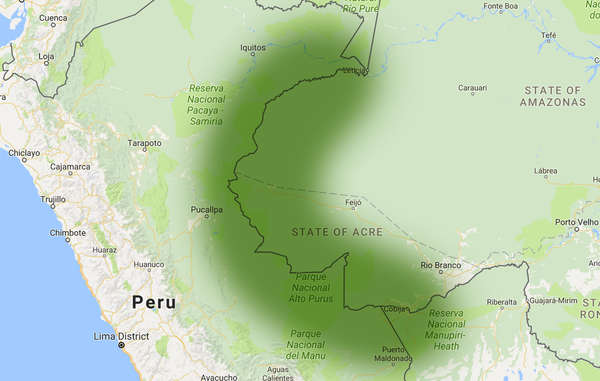
The Amazon Uncontacted Frontier, a large area on the Peru-Brazil border that is home to the highest concentration of uncontacted tribes in the world. © Survival International
Uncontacted tribes are not backward and primitive relics of a remote past. They are our contemporaries and a vitally important part of humankind’s diversity. Where their rights are respected, they continue to thrive.
Their knowledge is irreplaceable and has been developed over thousands of years. They are the best guardians of their environment. And evidence proves that tribal territories are the best barrier to deforestation.
All uncontacted tribal peoples face catastrophe unless their land is protected. Survival International is leading the global fight to secure their land for them, and to give them the chance to determine their own futures.
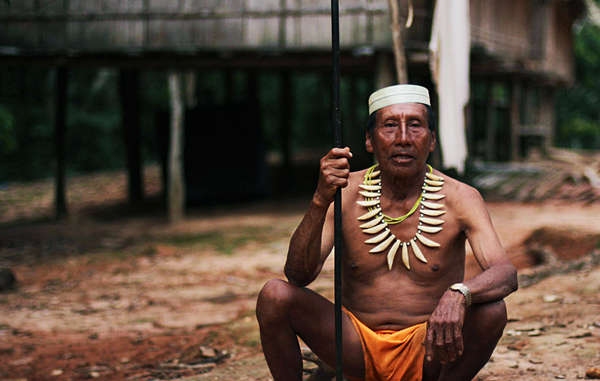
by Deep Green Resistance News Service | Mar 10, 2017 | Lobbying
Featured image: The Matsés have denounced oil exploration in the proposed Yavarí Tapiche reserve, which is part of their ancestral lands. © Survival International
by Survival International
In an open letter to the Peruvian authorities, Survival International, Rainforest Foundation Norway and Peruvian indigenous organization ORPIO have denounced the Peruvian government’s failure to protect uncontacted tribes.
The organizations are calling for the government to create an indigenous reserve, known as Yavari-Tapiche, for uncontacted tribes along the Peru-Brazil border, and to put a stop to outsiders entering the territory.
In the letter the three organizations state: “Uncontacted tribes are the most vulnerable peoples on the planet. They have made the decision to be isolated and this must be respected…
“The Yavarí Tapiche region is home to uncontacted peoples. Despite knowing of their existence and enormous vulnerability, the government has failed to guarantee their protection…
“These tribal peoples face catastrophe unless their land is protected. Only by creating the proposed Yavarí Tapiche indigenous reserve and implementing effective protection mechanisms that prevent the entry of outsiders, will the indigenous people be given the chance to determine their own futures…
“We are also concerned about the government’s refusal to exclude oil exploration within the proposed reserve…. No exploration or exploitation of oil should ever be carried out on territories inhabited by uncontacted Indians…
“We believe that the oil company Pacific Stratus is poised to begin operations this year in areas where there are uncontacted tribes…
“By failing to both create the reserve and to rule out oil exploration, Peru is violating both domestic and international law…
“If the government does not act urgently to protect the uncontacted peoples of Yavarí Tapiche, we fear that they will not survive. Another tribe will disappear from the face of the earth, before the eyes of the world.”
Survival’s Director Stephen Corry said: “We’ve repeatedly called for the Yavarí-Tapiche indigenous reserve to be created and for oil exploration to be ruled out, but the government has dragged its feet. The lives of uncontacted Indians are on the line but once again, economic interests take priority.”
Background Briefing
– The Yavarí Tapiche region is part of the Amazon Uncontacted Frontier. This area straddles the borders of Peru and Brazil and is home to more uncontacted tribes than anywhere else in the world.
– Pacific Stratus, part of Canadian oil company Pacific E&P, began its first phase of oil exploration in 2012, despite protests from indigenous organizations and Survival International. It is believed that the company will begin its second phase soon.
– Oil exploration is devastating for uncontacted tribes. Over 50% of the Nahua tribe died as a result of exploration in the 80s.
– The indigenous organization ORPIO is suing the government over the threat of oil exploration.
– National indigenous organization AIDESEP has been calling for the creation of the reserve for over 14 years.
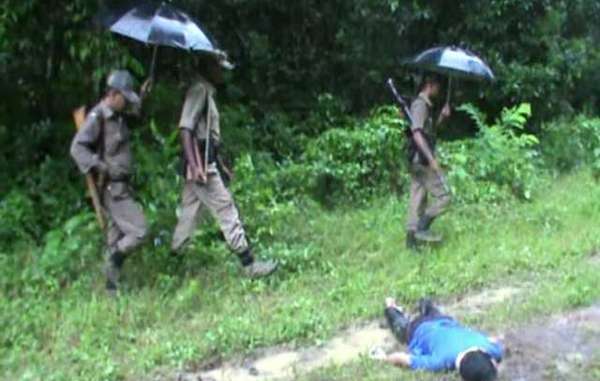
by Deep Green Resistance News Service | Feb 16, 2017 | Colonialism & Conquest
Featured image: Kaziranga park guards are heavily armed and instructed to shoot intruders on sight. © Survival International
by Survival International
A BBC investigation has revealed that tribal peoples living around a national park in India are facing arrest and beatings, torture and death under the Park’s notorious “shoot-on-sight” policy.
The report for television, radio and the BBC news website featured interviews with park guards, tribal people who have been affected by the policy in Kaziranga National Park, and a spokesman from WWF-India, which helps fund, train and equip park guards and advertises tours of the park through its website.
The park gets over 170,000 visitors each year. Fifty suspects were extrajudicially executed there in the last three years, and a severely disabled tribal man was shot dead in 2013. The BBC has estimated that 106 have been killed in the last 20 years. In the same period, only one official has been killed.
The BBC interviewed one local man who had been beaten and tortured with electric shocks during a detention by park officials before they realized he had no involvement in poaching.
The program also featured Akash Orang, a seven-year-old tribal boy who was shot in the legs by park guards last July. Akash said that: “The forest guards suddenly shot me” as he was on his way to a local shop. His father said: “He’s changed. He used to be cheerful. He isn’t any more. In the night, he wakes up in pain and he cries for his mother.”
Park guards have effective immunity from prosecution and are encouraged to shoot suspects on sight – without arrest or trial, or any evidence that they might have been involved in poaching. One guard admitted that they are: “Fully ordered to shoot them, whenever you see the poachers or any people during night-time we are ordered to shoot them.”
WWF has provided equipment – including what the BBC calls “night vision goggles” – which have been used in night-time operations and “combat and ambush” training. When asked by the BBC how donors might feel about their money being used to enforce this brutal treatment, WWF India’s spokesman said that: “What is needed is on-ground protection… We want to reduce poaching and the idea is to reduce it with involving other partners.”
Survival International is leading the global fight against these abuses and first brought the park’s high death toll and serious instances of corruption among Kaziranga officials – including involvement in the illegal wildlife trade they are employed to stop – to global attention in 2016.
Survival’s Director Stephen Corry said: “Conservation organizations, including WWF, are supporting a model of conservation which is resulting in gross human rights abuses. They have failed to condemn policies that are leading to widespread extrajudicial executions. For too long, conservation has relied on its positive public image to hide its horrific and sustained attacks on indigenous and tribal peoples’ rights. We’re working to stop this. It’s time for conservationists to work with tribal people, the best conservationists and guardians of the natural world. It’s time for conservation organisations to call for an end to shoot on sight policies.”
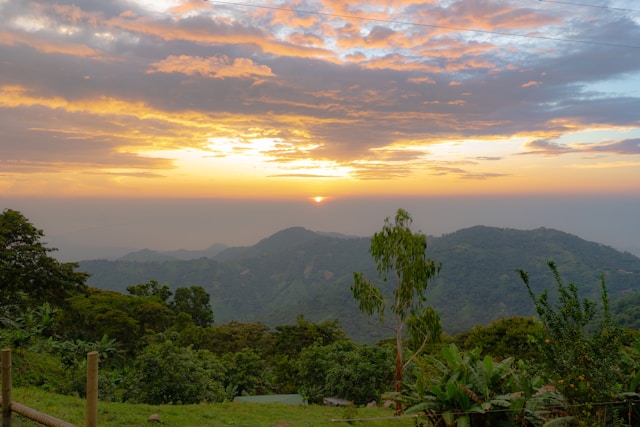
by Deep Green Resistance News Service | Feb 11, 2017 | Colonialism & Conquest, NEWS, Repression at Home
The Sierra Nevada de Santa Marta is a unique pyramid-shaped mountain on the northern tip of the Andes in northern Colombia. On its slopes live four separate but related peoples: the Arhuaco (or Ika), Wiwa, Kogi, and Kankuamo. Together they number more than 30,000.
The mountain’s peak is over 5,000m high. Rising from the shores of the Caribbean, the lower plains are clad in tropical forest, turning to open savannah and cloud forest higher up.
To the Indians, the Sierra Nevada is the heart of the world. It is surrounded by an invisible ‘black-line’ that encompasses the sacred sites of their ancestors and demarcates their territory.
by Survival International
Yoryanis Isabel Bernal Varela, 43, was a leader of the Wiwa tribe and a campaigner for both indigenous and women’s rights.
The Wiwa are one of four tribes that live on the Sierra Nevada de Santa Marta, a unique pyramid-shaped mountain in northern Colombia. The Sierra Nevada Indians believe it is their responsibility to maintain the balance of the universe.
Bernal Varela is the latest victim in a long line of attacks against Sierra Nevada leaders, who have been at the forefront of the indigenous movement in South America. Many Indians have been killed by drug gangs, left-wing guerrillas and the army.
In November 2012 Rogelio Mejía, the leader of one of the other Sierra Nevada tribes, the Arhuaco, narrowly escaped an assassination attempt.
José Gregorio Rodríguez, secretary of the Wiwa Golkuche organization, stated: “Indigenous people are being threatened and intimidated. Today they murdered our comrade and violated our rights. Our other leaders must be protected.”
The problem is not limited to Colombia. Indigenous activists throughout Latin America are being murdered for campaigning against the theft of their lands and resources. The murderers are seldom brought to justice.
In January, Mexican Tarahumara indigenous leader Isidro Ballenero López was killed. In 2005 he had received the prestigious Goldman prize for his fight against illegal deforestation.
Photo by Denise Leisner on Unsplash








